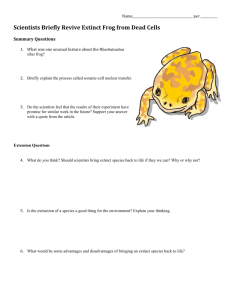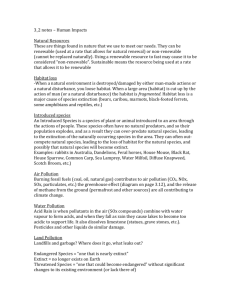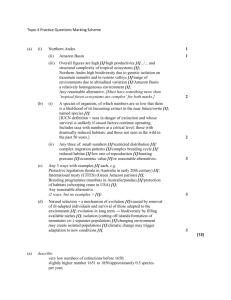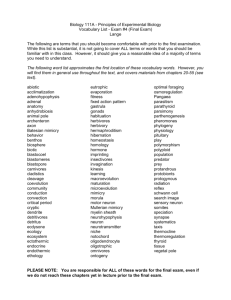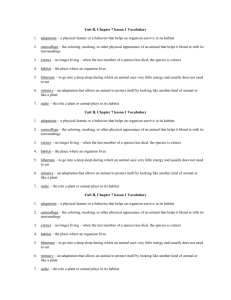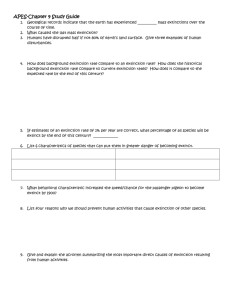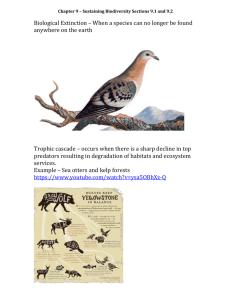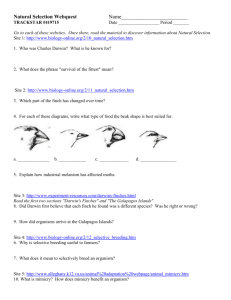Science Chapter 9: Adaptation and Extinction Final Test Study
advertisement
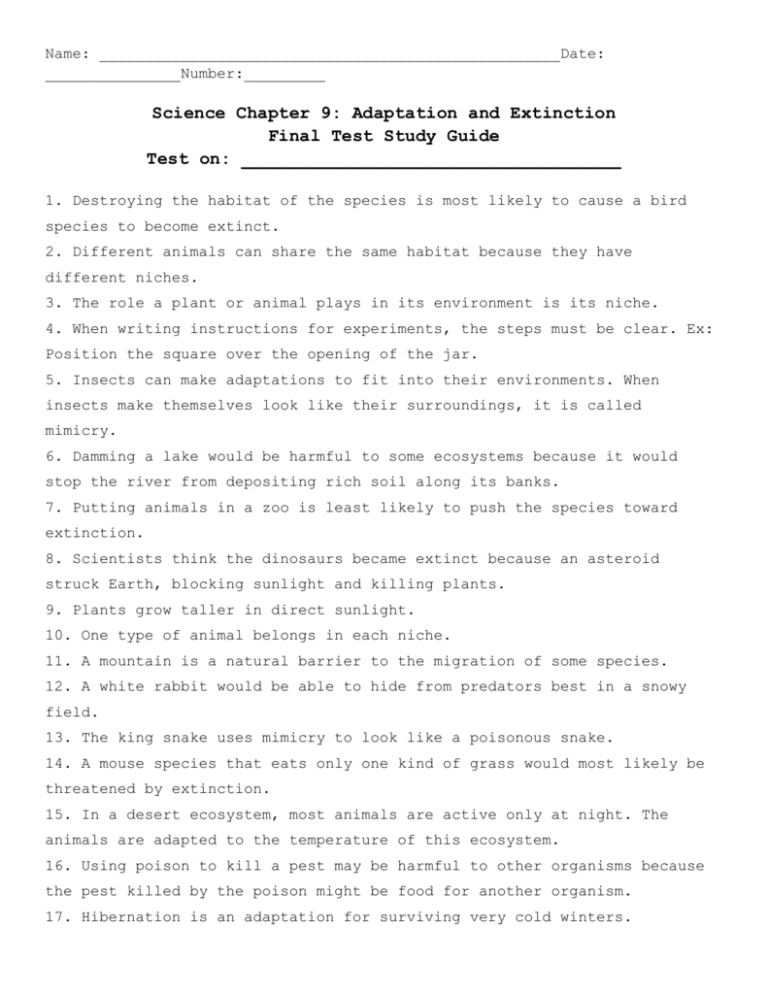
Name: ___________________________________________________Date: _______________Number:_________ Science Chapter 9: Adaptation and Extinction Final Test Study Guide Test on: ____________________________________ 1. Destroying the habitat of the species is most likely to cause a bird species to become extinct. 2. Different animals can share the same habitat because they have different niches. 3. The role a plant or animal plays in its environment is its niche. 4. When writing instructions for experiments, the steps must be clear. Ex: Position the square over the opening of the jar. 5. Insects can make adaptations to fit into their environments. When insects make themselves look like their surroundings, it is called mimicry. 6. Damming a lake would be harmful to some ecosystems because it would stop the river from depositing rich soil along its banks. 7. Putting animals in a zoo is least likely to push the species toward extinction. 8. Scientists think the dinosaurs became extinct because an asteroid struck Earth, blocking sunlight and killing plants. 9. Plants grow taller in direct sunlight. 10. One type of animal belongs in each niche. 11. A mountain is a natural barrier to the migration of some species. 12. A white rabbit would be able to hide from predators best in a snowy field. 13. The king snake uses mimicry to look like a poisonous snake. 14. A mouse species that eats only one kind of grass would most likely be threatened by extinction. 15. In a desert ecosystem, most animals are active only at night. The animals are adapted to the temperature of this ecosystem. 16. Using poison to kill a pest may be harmful to other organisms because the pest killed by the poison might be food for another organism. 17. Hibernation is an adaptation for surviving very cold winters. 18. A bright blue insect has the same color pattern as a poisonous frog. Predators that avoid eating the frog also avoid eating the insect. Mimicry helps the insect survive. 19. If a scientist wants to research the behavior of Bengal tigers in their natural habitat, that scientist should hide in the forest where the Bengal tigers live and observe them. 20. Fish adaptations include gills for breathing, fins for swimming, and coloration to appear camouflaged.

